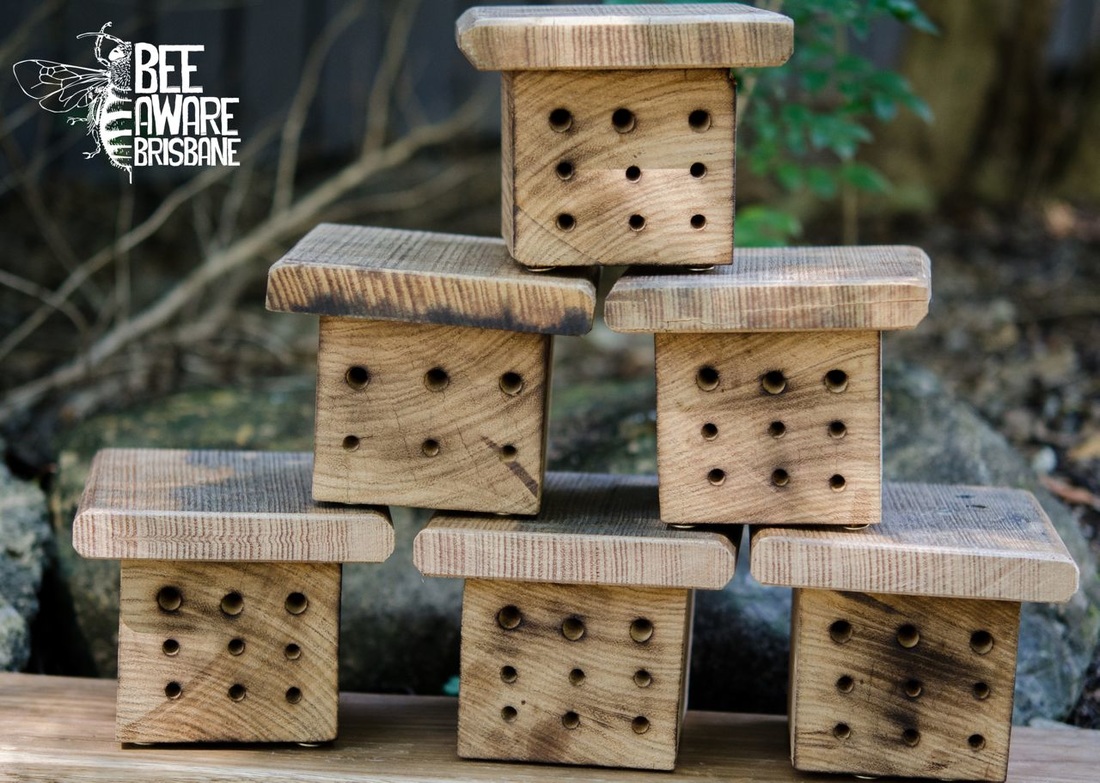|
In preparation for spring, you can make nest sites for native cavity nesting solitary bees for your garden. Get a block of timber (that has not been treated with any chemicals!) and drill some holes in it. Holes of 6mm and 8mm diameter seem to be good, and will attract resin bees and leafcutter bees. But why not experiment too? Drill some other random sizes and see what you get? Drill as deep as you can, up to a depth of about 13–15cm for the larger diametres. The holes should be angled slightly up, so the bee goes up a very slight incline as it crawls in. After drilling the holes, it can also help to flame the hole entrances slightly. One way of doing this is to briefly pass the timber over a burning gas cooking ring. I suggest just having a series of small nest blocks scattered around, rather than a big block or a ‘bee wall’, as large aggregations can increase the incidence of pests and disease. Put your nest block outside in a place where it is protected from rain and harsh summer sun. Now wait patiently, and when it starts to warm up, females of various solitary bee species might move in. If you miss seeing the bees coming and going, you will know when someone has nested in a hole because the end will be sealed up. Remember that solitary bees can sting, but usually only if handled. In nature these bee species often nest in the holes left by wood boring beetles.
5 Comments
ann quinton
9/5/2015 05:59:50 pm
thankyou
Reply
Polly Musgrove
9/6/2015 03:24:25 pm
Great! Will have a go at this and scatter bee boxes around the community garden and my own property and see who moves in to this prime real estate!!
Reply
John Sanders
9/7/2015 06:33:33 pm
Will get on and do this as we have seen Blue-banded bees here and have even put in special plants to try to encourage them further.
Reply
Kay Godden
1/11/2016 12:09:06 am
Blue Bandeds build their nests in clay. Directions for these are on the net, try aussiebee.com.au or just google blue banded bee nests.
Reply
Kay Godden
1/11/2016 12:05:42 am
The depth of the holes need to be as follows, if shorter there will not be enough males to keep increasing the bee numbers.
Reply
Leave a Reply. |
Archives
December 2017
Blog postsThese are a collection of posts that have appeared on the Bee Aware Brisbane Facebook page over the last couple of years. Categories |


 RSS Feed
RSS Feed
